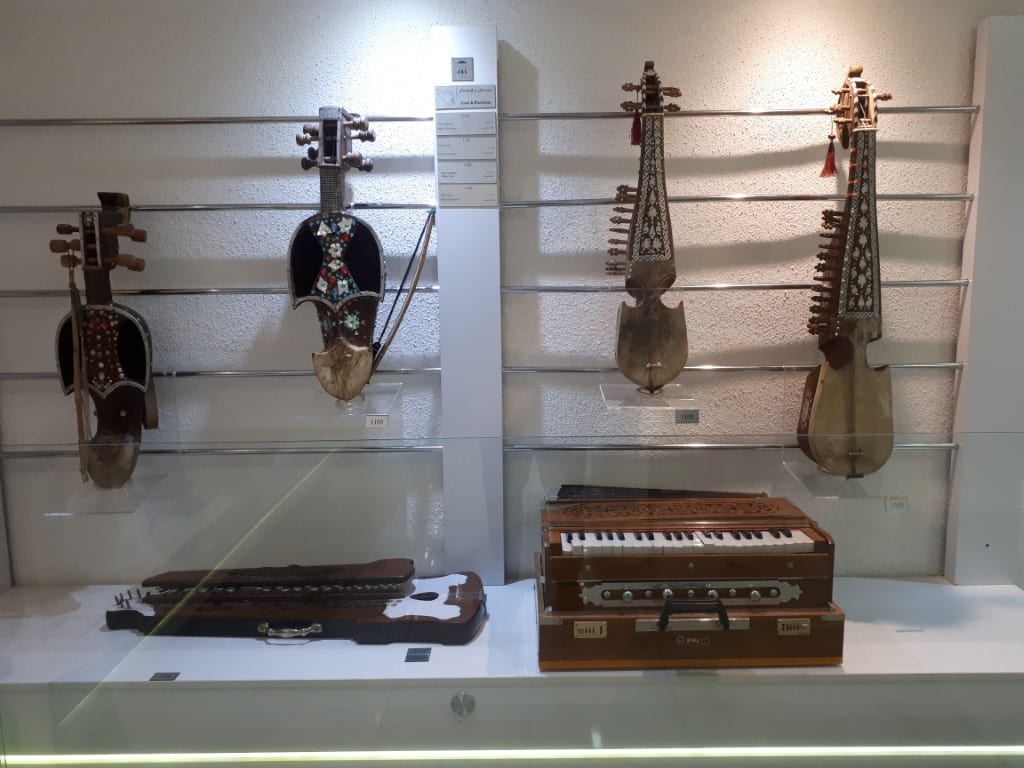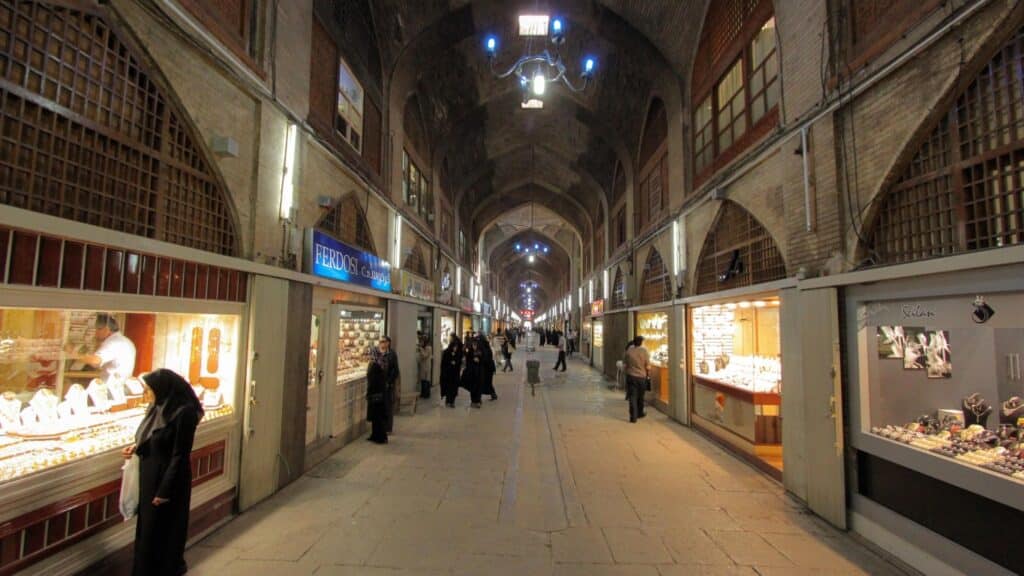Isfahan Music Museum Guide: What to See and Experience
Discover Iran's Musical History in Isfahan Museum

The Isfahan Music Museum offers visitors a unique insight into Iran’s musical heritage. Located in the heart of Isfahan, this museum showcases an impressive collection of traditional Persian instruments, each with its own historical and cultural significance.
Guests can enjoy live performances, guided tours, and interactive exhibits, making it an engaging destination for music enthusiasts and curious travelers. Whether you’re exploring Isfahan’s rich history or seeking a deeper understanding of Persian art, the museum provides a memorable experience. It’s a must-visit for anyone interested in learning about Iran’s musical traditions.
Isfahan is often referred to as “half the world” for its remarkable blend of history, culture, and art. This nickname reflects the city’s extensive cultural heritage, representing a microcosm of the broader world through its stunning architecture, vibrant traditions, and deep historical significance. Renowned for iconic landmarks like Chehel Sotoun and Sheikh Lotfollah Mosque, the city offers far more than its famous historical sites.

Among its hidden gems is the Isfahan Music Museum, a unique destination that celebrates the city’s rich musical heritage. Isfahan has long been considered the cradle of authentic Iranian music, with the ancient Isfahani mode highlighting its significance.
Contents
History of the Isfahan Music Museum
The Isfahan Music Museum is Iran’s first and only privately organized music museum. Founded by passionate musicians Mehrdad Jihouni and Shahryar Shekarani, it was inaugurated on December 2, 2015. The museum quickly became a beloved destination for music enthusiasts.
In 2016, it achieved significant milestones: the museum received the title of Best Privately Organized Museum in Iran from the Cultural Heritage, Handicrafts, and Tourism Organization of Iran, recognizing its exceptional contribution to preserving Iranian music.

Additionally, it was awarded first grade on the index for technical principles and physical standards by ICOM (International Council of Museums) Iran, a testament to its high-quality exhibits and adherence to international museum standards. These accolades underscore the museum’s dedication to excellence and innovation.
Why Visit the Isfahan Music Museum?
This museum stands out for its immersive and interactive experience. It showcases over 300 musical instruments, including rare pieces such as the ancient Ganun and the versatile Tar, offering visitors a glimpse into Iran’s rich musical heritage. The live performances, held in the museum’s Music Room, are a highlight, featuring traditional Iranian compositions played by skilled musicians.

Additionally, the museum houses a shop where visitors can purchase unique instruments and handicrafts that are often unavailable elsewhere. A key feature of the museum is its multilingual staff, who are well-versed in music and fluent in languages like French and English.
BOOK ONLINE
Isfahan Hotels
For those unable to visit in person, a virtual tour option ensures the museum’s treasures are accessible to a global audience.
Sections of the Isfahan Music Museum
National Instruments Hall
This hall showcases traditional instruments played throughout Iran, such as the Tar, Ney, and Santur. Visitors can learn about their origins and hear their distinctive sounds through media and audio displays, providing an engaging way to explore Iran’s rich musical traditions.

Local Instruments Hall
Dedicated to regional instruments from various parts of Iran, this section offers insight into the country’s diverse musical heritage. Instruments such as the Dutar from Khorasan or the Balaban from Azerbaijan carry deep cultural significance, reflecting the unique traditions and storytelling of their regions. Visitors can learn how these instruments were integral to ceremonies, celebrations, and daily life, providing a vivid connection to Iran’s regional history.

The Home of Iranian Traditional Music
This room pays tribute to renowned musicians from Isfahan. Visitors can explore their biographies and contributions to Iranian music, gaining a deeper appreciation for the city’s role in shaping the nation’s musical identity.
Instrument-Making Workshop
Here, visitors witness the craftsmanship behind Iranian musical instruments. The workshop demonstrates the construction of traditional instruments, from selecting materials to assembling intricate components, showcasing the artistry and skill involved.

Music Room
At the end of the tour, guests can enjoy live performances of traditional Iranian music, providing a captivating and interactive experience. Visitors are even encouraged to try playing the instruments themselves, fostering a deeper connection to Iran’s musical heritage.
How to Reach the Isfahan Music Museum
The museum is located at 74 Mehrdad Street, near Tohid and Shahid Ghandi streets.
By Public Transport:
Take buses from Shohada Square to Zayandeh Rud station and walk to Shahid Ghandi Street.
By Vehicle:
Parking is available nearby, making it accessible for those driving.
Visiting Hours
The museum is open daily from 9:00 AM to 9:00 PM, with the last entry at 7:30 PM. Note that it is closed on holidays.
Nearby Attractions
Eight Heavens Palace (Kakh-e Hasht Behesht)

Located just a short walk from the Isfahan Music Museum, Kakh-e Hasht Behesht is a stunning historical palace built during the Safavid era. The palace is surrounded by a lush garden and showcases exquisite Persian architecture with intricate decorations, including painted birds, gold gilding, and mirror work. Its close proximity makes it an ideal stop for visitors planning a full day of exploration in the area.
Address: Chaharbagh Abbasi Street, Gol Dasteh Street, Hasht Behesht Park, Isfahan
Phone: +98 31 32225958
Visiting Hours: 9:00 AM – 5:30 PM
National Museum of Arts of Isfahan

Just one kilometer from the museum, the National Museum of Arts of Isfahan displays over 300 artifacts ranging from prehistoric eras to modern times. Highlights include stunning luster tiles and lacquered works. The museum is housed in a two-story historical building, making it a blend of art and architecture.
Address: Abbas Abad Street, Masroor Street, Isfahan
Phone: +98 31 32372526
Visiting Hours: 9:00 AM – 5:00 PM
Chehel Sotoun Palace

Chehel Sotoun, a UNESCO World Heritage Site, is a magnificent Safavid palace located about 1 kilometer (12-minute walk) from the Isfahan Music Museum. Renowned for its mirrored columns and beautiful frescoes, the palace was once used to host royal receptions and diplomatic events.
Address: Sepah Street, Imam Hossein Square, Isfahan
Phone: +98 31 32220181
Visiting Hours: 9:30 AM – 5:30 PM
Art Bazaar (Bazaar-e Honar)

Situated 150 meters (2-minute walk) from the Isfahan Music Museum, Bazaar-e Honar is a traditional market showcasing fine gold and jewelry handcrafted by Isfahan’s artisans. Visitors can admire the intricate designs and enjoy the market’s vibrant atmosphere.
Address: Chaharbagh Abbasi Street, South of Hasht Behesht Park
Phone: +98 31 32225458
Hours: 9:00 AM – 1:00 PM, 5:00 PM – 8:00 PM
Conclusion
Isfahan’s historical and cultural richness is epitomized by the Isfahan Music Museum, which not only highlights the city’s vital role in preserving and celebrating Iranian music but also serves as a bridge connecting its musical legacy to its broader cultural and historical significance. The museum exemplifies how Isfahan’s artistic traditions continue to influence and inspire the global appreciation of Iranian culture. From its extensive collection of instruments to its live performances and engaging workshops, the museum offers a comprehensive look at Iran’s musical heritage. Whether you’re an art enthusiast, a history buff, or a curious traveler, the Isfahan Music Museum promises an unforgettable experience. Plan your visit today and immerse yourself in the harmonic world of Iranian music.
FAQ
When was the Isfahan Music Museum founded?
The museum was established on December 2, 2015.
How many musical instruments are featured in the Isfahan Music Museum?
The museum houses over 300 instruments.
Why is Isfahan called “half the world”?
Isfahan is renowned for its rich historical and cultural heritage, which makes it one of the most fascinating cities globally.







